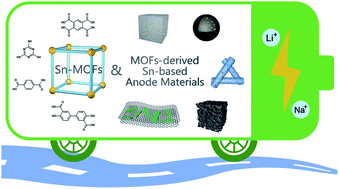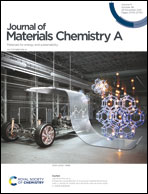MOFs and their derivatives as Sn-based anode materials for lithium/sodium ion batteries
Abstract
The rapid development of electric vehicles and consumer electronics places higher demands on the performance of secondary batteries. Tin-based materials are expected to be a commercial anode material candidate of next-generation rechargeable batteries due to their high gravimetric/volumetric capacity. However, tin anodes have large volume changes during charge–discharge cycles which leads to a rapid capacity decay. Emerging tin-based metal–organic frameworks (Sn-MOFs) have recently attracted the attention of researchers. Their characteristics of tunable porosity, huge surface areas and multiple active sites offer a wide range of possibilities for Li/Na ion storage and transport, and the coordination bonds stabilize the Sn atoms to the organic matrix buffering pulverization and aggregation. Besides, MOF-related Sn derivatives could also have novel diverse functional structures and achieve high-rate capacity and excellent cycle stability. In this review, we mainly summarize the structural features, energy storage mechanism, and recent advances in the rational design and preparation of Sn-MOFs and MOF-derived Sn-based composites for LiB and SIB anodes, and current challenges and future directions for further development are discussed.



 Please wait while we load your content...
Please wait while we load your content...